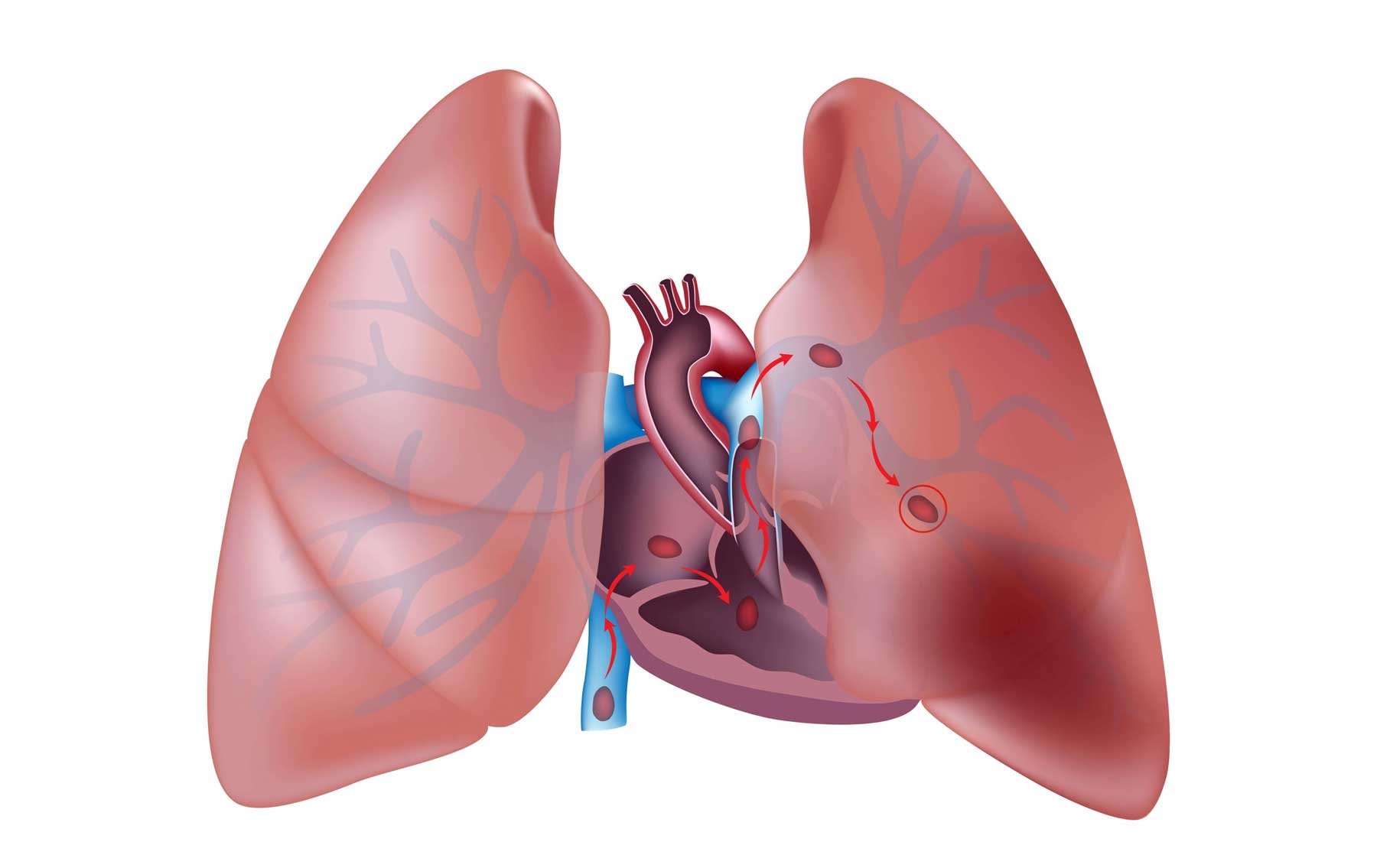Deep Vein Thrombosis Thrombosis is the formation of a blood clot (thrombus), which can partially…

Mitral Stenosis
Mitral stenosis occurs when the mitral valve, which is located between the left atrium (one of the two upper chambers of the heart) and the left ventricle (one of the two lower, pumping chambers of the heart), becomes scarred, the valve flaps (leaflets) stick together, and the channel becomes abnormally narrow. To pump blood through the narrowed opening, the atrium enlarges, and pressure inside the chamber gradually rises. This pressure is passed back through the pulmonary veins and capillaries to the lungs, which, over a period of years, become congested. To keep blood flowing through the lungs at a normal rate, the right ventricle also pumps harder and becomes enlarged.
Symptoms
The main symptom of mitral stenosis is shortness of breath. Shortness of breath occurs most often after exercise, but it also can occur during the night or whenever you lie down. When you are sleeping, you may awaken suddenly, feeling as though you can’t breathe. You may cough up small amounts of blood or blood-flecked, frothy phlegm. You may begin to wheeze, and breathing may become more difficult. These symptoms can be mistaken for bronchitis.
As pressure builds throughout the circulatory system, you may experience fatigue, swollen ankles, or other symptoms of congestive heart failure. Shortness of breath and fatigue can be disabling, especially if you are pregnant or if you have a chest infection, an overactive thyroid gland, or any condition that increases cardiac output. The main complication of mitral stenosis is atrial fibrillation, which can cause heart failure and formation of a blood clot in the left atrium. A blood clot may break loose, travel through the bloodstream, and block a distant blood vessel, often in the brain, where it causes a stroke.
About half of all people who have had rheumatic fever later develop heart valve damage, and nearly three quarters of these people have mitral stenosis. However, because rheumatic fever is rare today, mitral stenosis occurs much less frequently.
Treatments
Your doctor may prescribe a diuretic to help your body eliminate excess fluid and decrease swelling. However, because diuretics may also cause loss of potassium (a mineral that is essential for the heart muscle to contract and maintain a normal heart rhythm), your doctor also may prescribe a potassium supplement. If you have atrial fibrillation, your doctor will prescribe medication to control it. He or she also may prescribe anticoagulants to prevent the formation of blood clots in the left atrium.
If your mitral stenosis is severe and interferes with your daily activities, your doctor may recommend a surgical procedure called balloon valvuloplasty. In this procedure, the doctor guides a catheter (a thin, flexible tube) through an artery to the damaged valve. He or she then guides a tiny deflated balloon through the catheter to the valve and then inflates the balloon, opening the valve. This procedure is highly effective in relieving symptoms of mitral stenosis.
Doctors may recommend surgery for pregnant women who have severe symptoms of mitral stenosis. In an open-heart procedure called mitral valvotomy, the surgeon widens the valve. In many cases, symptoms do not return, or return years later. If your symptoms return, you may need to have a second mitral valvotomy, or your doctor may recommend heart valve replacement surgery. Most people who have a heart valve replacement survive for at least 5 years.
If your symptoms are not severe, you should be able to lead an active life without treatment. However, you will need to take prescription antibiotics as a precaution before having any dental treatment or surgery, to protect you from developing infective endocarditis, a potentially life-threatening infection of the inner lining of the heart muscle.



